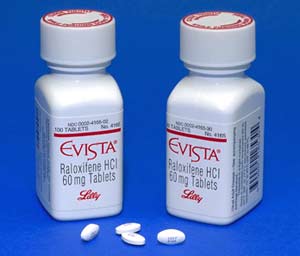Initial results from a medical study in the United States indicate that a drug currently used to treat osteoporosis may also reduce the risk of breast cancer. Furthermore, it has fewer side effects compared to Tamoxifen, which is commonly used for this condition.
 |
| The drug Raloxifene is marketed under the brand name Evista as a treatment for osteoporosis (Image: Lilly) |
Tamoxifen is often prescribed to prevent breast cancer, but postmenopausal women, who are at a higher risk for breast cancer, often avoid this medication due to its side effects.
Good news has emerged for these women as researchers have announced that those using Raloxifene, a medication for treating osteoporosis, are less likely to develop breast cancer. This statement comes after testing involved over 20,000 women, most of whom are postmenopausal, including those over 60 and women with a family history of breast cancer.
During the study, researchers compared the two medications and found that regular use of Raloxifene over five years could reduce the risk of malignant breast cancer by half.
According to Dr. Mary Daly from the Fox Chase Cancer Center, Raloxifene works by inhibiting female hormones necessary for the growth of breast cancer tissue.
Raloxifene does cause some side effects, but not as many as Tamoxifen. Users of Raloxifene have 36% fewer cases of uterine cancer and 29% fewer thromboembolic events than those taking Tamoxifen. Additionally, Raloxifene users are less likely to develop cataracts.
Currently, the pharmaceutical company Eli Lilly has released Raloxifene to the market under the brand name Evista as a treatment for osteoporosis. With this research, Lilly plans to seek approval from the U.S. Food and Drug Administration to market Raloxifene as a preventive measure against breast cancer.

















































